Biography Prof. WONG obtained his B.Sc.(Hons.) and Ph.D. degrees from the University of Hong Kong. After postdoctoral works at Texas A&M University (Advisor: Prof. F. A. Cotton) and the University of Cambridge (Advisors: Profs. Lord Lewis and P. R. Raithby), he joined Hong Kong Baptist University from 1998 to 2016 and he now works at the Hong Kong Polytechnic University as Chair Professor of Chemical Technology and Dean of Faculty of Science (formerly Faculty of Applied Science and Textiles). He is currently the Chairman of Hong Kong Chemical Society and the Editor/Associate Editor of Journal of Materials Chemistry C, Journal of Organometallic Chemistry and Topics in Current Chemistry. He was awarded the RSC Chemistry of the Transition Metals Award, FACS Distinguished Young Chemist Award, State Natural Science Award from China and RGC Senior Research Fellow Award, etc. His research focuses on synthetic inorganic/organometallic chemistry, especially aiming at developing metal-organic molecules and polymers for organic optoelectronics and metal-based nanomaterials.

Abstract The widespread adoption battery technologies for electric vehicles and grid electricity storage requires optimization of cost, energy density, power density, cycle life, safety, and environmental impact, all of which are directly linked to severe materials challenges. Cost and sustainability will be the single dominant factor as we march forward. This presentation will focus on the development of sustainable next-generation battery chemistries and materials. Strategies and approaches for elimination of expensive and scarcely available cobalt, followed by eliminating nickel and ultimately any mined metal, including lithium, will be discussed. As an example, the progress on cobalt-free high-nickel cathodes, lithium-sulfur cells, and sodium-sulfur cells will be presented. The challenges of bulk and surface instability and chemical crossover during charge-discharge cycling, dynamics and stabilization of lithium or sodium plating and striping, advanced characterization methodologies to develop an in-depth understanding, and approaches to overcome the challenges will be presented.
Biography Arumugam Manthiram is the Cockrell Family Regents Chair in Engineering and Director of the Texas Materials Institute at the University of Texas at Austin (UT-Austin). After receiving his Ph.D. in chemistry from Indian Institute of Technology Madras in 1981 and working as a postdoctoral researcher at the University of Oxford and at UT-Austin, he became a faculty member in the Department of Mechanical Engineering at UT-Austin in 1991. His research is focused on batteries and fuel cells. He has authored 900 journal articles with 90,000 citations and an h-index of 148. He has mentored close to 300 students and postdoctoral researchers, including the graduation of 67 Ph.D. students.
Dr Manthiram is a Fellow of Materials Research Society, Electrochemical Society, American Ceramic Society, Royal Society of Chemistry, American Association for the Advancement of Science, and World Academy of Materials and Manufacturing Engineering. He is an elected member of the World Academy of Ceramics. He received the university-wide (one per year) Outstanding Graduate Teaching Award in 2012, Battery Division Research Award from the Electrochemical Society in 2014, Distinguished Alumnus Award of the Indian Institute of Technology Madras in 2015, Billy and Claude R. Hocott Distinguished Centennial Engineering Research Award in 2016, Henry B. Linford Award for Distinguished Teaching from the Electrochemical Society in 2020, International Battery Association Research Award in 2020, and Battery Division Technology Award from the Electrochemical Society in 2021. He is a Web of Science Highly Cited Researcher every year since 2017. He delivered the 2019 Chemistry Nobel Prize Lecture in Stockholm on behalf of Professor John Goodenough.
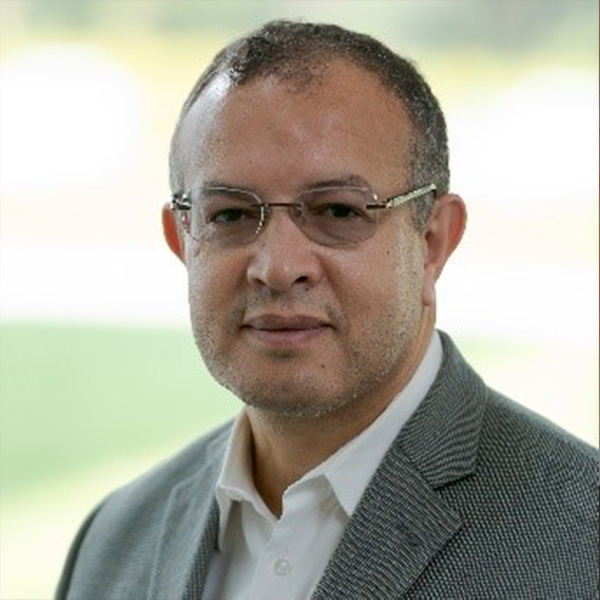
Abstract To meet the high-energy requirement that can enable the 40-miles electric drive Plug in Hybrid Electric Vehicle (P-HEVs), long range electric vehicle (EV) and smart grid, it is necessary to develop very high energy and high power cathodes and anodes that when combined in a battery system must offer 5,000 charge-depleting cycles, 15years calendar life as well as excellent abuse tolerance. These challenging requirements make it difficult for conventional battery systems to be adopted in P-HEVs and EVs. In this talk, we will present a next generation lithium ion battery that include Ni rich full gradient cathode, a high voltage and nonflammable electrolyte and Silicon-graphene composite anode including a novel pre-lithiation technology to overcome the irreversible loss of this anode in the first cycle. We will then show how Se doping of Sulfur (S) can overcome the conductivity issue of Sulfur and eliminate the dissolution of poly-sulfide using an advanced electrolyte system that is compatible with Lithium metal.
Biography Dr K. Amine is currently the Argonne distinguished Fellow and team leader of the Advanced Lithium Battery Technology program at Argonne National Laboratory, responsible for directing the research and development of advanced materials and battery systems for HEV, PHEV, EV, satellite, military and medical applications. He is also the Deputy Director of US/China Clean Energy research center, adjunct professor at Stanford University, and Professor at University of Chicago (Joint appointment). He has received numerous awards including Global Energy Prize (2019), R&D 100 award (2019), Electrochemical Society Battery Research award (2019), International coalition for energy storage and innovation award (2019), Elsevier Energy Storage Material Award (2018), and Argonne Commercialization Excellence, Lifetime achievement award (2018) in recent years. He has published over 700 paper including 38 Nature & Nature sister journal articles. He is the Fellow of the National Academy of Inventors.
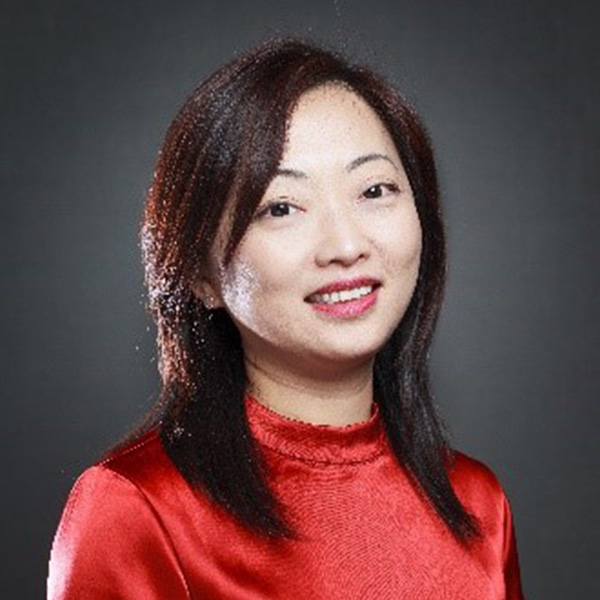
Abstract Lithium (Li) metal has been considered as an ideal anode for high-energy rechargeable Li batteries while Li nucleation and growth at the nano scale remains mysterious as to achieving reversible stripping and deposition. A few decades of research have been dedicated to this topic and we have seen breakthroughs in novel electrolytes in the last few years, where the efficiency of lithium deposition is exceeding 99%. Here, cryogenic-transmission electron microscopy (Cryo-TEM/Cryo-FIB) was used to reveal the evolving nanostructure of Li deposits at various transient states in the nucleation and growth process, in which a disorder-order phase transition was observed as a function of current density and deposition time. More importantly, the complementary techniques such as titration gas chromatography (TGC) reveals the important insights about the phase fraction of solid electrolyte interphases (SEI) and electrochemical deposited Li (EDLi). While cryo-EM has made significant contributions to enabling lithium metal anodes for batteries, its applications in the area of solid state electrolytes, thick sulfur cathodes are still in its infancy, therefore, I will discuss a few new perspectives about how future cryogenic imaging and spectroscopic techniques can accelerate the innovation of novel energy storage materials and architectures.
Biography Dr Y. Shirley Meng received her Ph.D. in Advance Materials for Micro & Nano Systems from the Singapore-MIT Alliance in 2005. She held the Zable Chair Professor in Energy Technologies at University of California San Diego (UCSD) from 2017-2022. Dr Meng is currently a Professor at the Pritzker School of Molecular Engineering. She serves as the Chief Scientist of the Argonne Collaborative Center for Energy Storage Science (ACCESS) Argonne National Laboratory. Dr Meng is the principal investigator of the research group - Laboratory for Energy Storage and Conversion (LESC). Dr Meng received several prestigious awards, including the Faraday Medal of Royal Chemistry Society (2020), International Battery Association Battery IBA Research Award (2019), Blavatnik Awards for Young Scientists Finalist (2018), American Chemical Society ACS Applied Materials & Interfaces Young Investigator Award (2018), C.W. Tobias Young Investigator Award of the Electrochemical Society (2016) and NSF CAREER Award (2011). Dr Meng is elected Fellow of Electrochemical Society (FECS), Fellow of Materials Research Society (FMRS) and Fellow of American Association for the Advancement of Science (AAAS). She is the author and co-author of more than 260 peer-reviewed journal articles, two book chapters and five issued patents. She is the Editor-in-Chief for Materials Research Society MRS Energy & Sustainability.
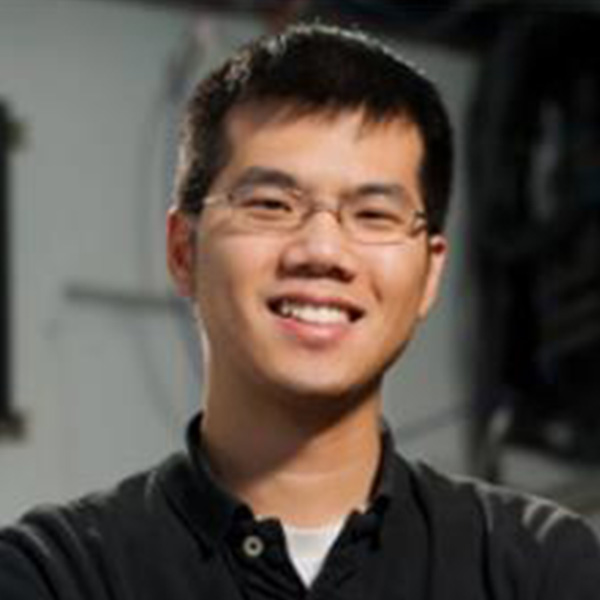
Abstract Advances in cathode active materials have propelled the evolution of lithium-ion batteries over the past two decades. The structure-property relationship is well-understood, for example, among olivine, layered and spinel crystal structures. However, it is increasingly recognized that local structure plays a substantial role in terms of synthesis pathway, cycling and aging. For example, in layered oxides, point defect disorders such as cation vacancies, antisites, and oxygen vacancies affect the local chemistry substantially, leading to interesting changes in stability and redox potential. In this talk, I will overview our recent work in understanding the local chemistry of Li-rich layered oxides, whereby high-valent oxidation states reached during charging (oxidation) gives rise to unusual local chemistries near point defects.
Biography Prof. CHUEH is an Associate Professor in the Department of Materials Science and Engineering, a Senior Fellow of the Precourt Institute for Energy at Stanford University, and a faculty scientist at SLAC National Accelerator Laboratory. He leads a group of more than thirty researchers tackling the fundamentals of redox and electrochemical processes in the solid state. Additionally, he directs Stanford's StorageX Initiative that builds academic-industrial partnerships to accelerate the electrification of transportation and the penetration of intermittent renewable electricity in energy systems. He received his BS in applied physics, and his MS and PhD in materials science from Caltech. Prior to joining Stanford in 2012, he was a Distinguished Truman Fellow at Sandia National Laboratories. Prof. CHUEH has received numerous honors, including the Humboldt’s Bessel Award (2021), MRS Outstanding Young Investigator Award (2018), Volkswagen/BASF Science Award Electrochemistry (2016), Camille Dreyfus Teacher-Scholar Award (2016), Sloan Research Fellowship (2016), NSF CAREER Award (2015), Solid State Ionics Young Scientist Award (2013), Caltech Demetriades-Tsafka-Kokkalis Prize in Energy (2012), and the American Ceramics Society Diamond Award (2008). In 2012, he was named as one of the “Top 35 Innovators Under the Age of 35” by MIT’s Technology Review.
Abstract Dendrite growth is a common problem in energy storage devices employing alkali metal electrodes. Many strategies have been developed to improve the cycle performance of alkali metal electrodes, but with moderate success. A largely unexplored aspect is the effect of surface texturing on the plating/stripping characteristics of alkali metal foils and eventually cycle performance of the electrode. By taking Li metal foil as an example, we show in this talk that crystallographic orientation (surface texturing) can be prepared using simple mechanical methods, and it plays a key role in determining the cycle performance of the Li metal anode in both symmetrical cells and full cells. Li foil of {110} texturing is demonstrated to have superior cycling stability when compared to Li {100} or pristine Li foils without specific texturing. Experimental evidence and computational modeling suggest that the enhanced cycle performance of Li {110} originates from the low surface energy/surface diffusion barrier associated with the Li {110} plane, leading to not only dense Li plating but also uniform stripping during cycling.
BiographyQuan Li is Professor at The Chinese University of Hong Kong. She obtained her B.S. in Chemistry from Beijing University in 1997, and her PhD in Materials Science and Engineering from Northwestern University in 2001. She joined CUHK in 2002 as an Assistant Professor, and was promoted to Associate Professor and Professor in 2007, and 2011, respectively. Her research interests include functional materials and structures for energy and biomedical applications, and quantum sensing. Her work on energy materials focuses on electrode materials/architectures development for batteries. In investigating nano-bio interfaces, her group works on manipulating the interplay of nanoparticles and biological systems, as well as nano-vaccine development. Her work of quantum sensing is devoted to sensor development and applications in both energy storage and biomedicine.
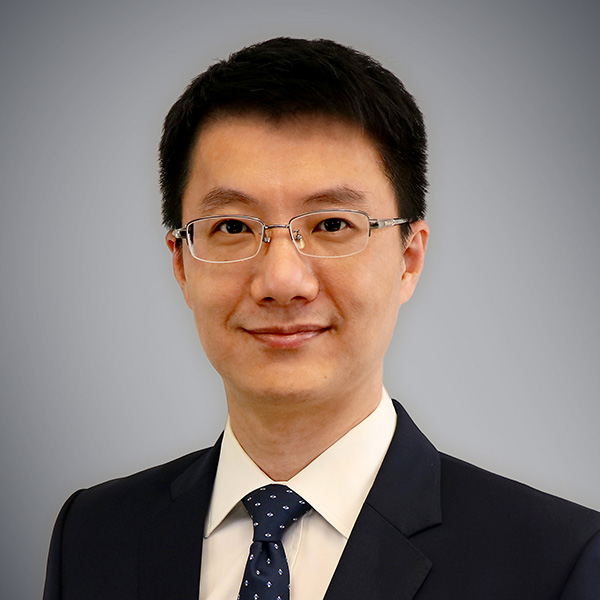
Abstract Flexible batteries are indispensable corner stones for future wearable electronics. Current energy storage technologies are based on materials and devices that are rigid, bulky, and heavy, making them difficult to wear. On the other hand, fibers are flexible and lightweight materials that can be assembled into different textiles and have been worn by human beings thousands of years. Different from conventional two-dimensional thin films and foils, the three-dimensional fibre and textile structures not only provide superior wearing ability, but also much larger surface areas. This talk will introduce how our research group makes use of the attributes of fibres for high-performance wearable energy storage devices. We will demonstrate the strategies and discuss the perspectives to modify fibers and textiles for making flexible batteries with excellent mechanical durability, electrochemical stability, and high energy/power density. We will also show that the fibrous materials can significantly enhance the stability and energy density of battery for wearable applications and others such as Na battery. References
BiographyProf. Zijian Zheng is currently Full Professor at the School of Fashion and Textiles (SFT), Associate Director of Research Institute for Intelligent Wearable Systems, Lead Investigator of Research Institute for Smart Energy (RISE) at The Hong Kong Polytechnic University. His research interests include surface and polymer science, nanofabrication, flexible and wearable electronics, energy conversion and storage. Prof. Zheng received his B. Eng. in Chemical Engineering at Tsinghua University in 2003, and PhD in Chemistry at University of Cambridge in 2007 (Supervisor: Prof. Wilhelm T. S. Huck). In 2008, he worked as postdoctoral researcher with Prof. Chad A. Mirkin at Northwestern University in the USA. He joined ITC as Assistant Professor in 2009, and was promoted to tenured Associate Professor in 2013 and Professor in 2017. He has published ~150 papers in high-impact international scientific journals including Science, Nat. Mater., Nat. Comm., Adv. Mate., JACS, Angew. Chem.. He also files 25+ patents and is recipient of more than 15 academic awards. He serves as Guest Editor of Advanced Materials and Small, and Editor-in-Chief of EcoMat, a flagship open-access journal in green energy and environment published by Wiley. He is elected Founding Member of The Young Academy of Sciences of Hong Kong (2018), Chang Jiang Chair Professor by the Ministry of Education of China (2020), and Senior Research Fellow of the University Grant Commission of Hong Kong (2021).
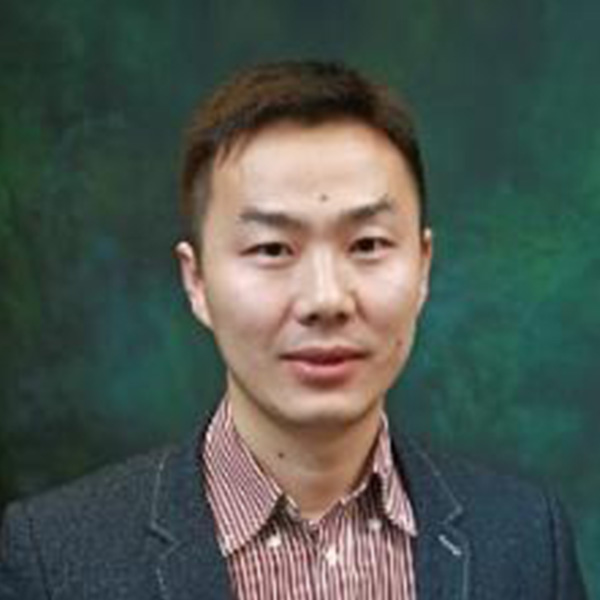
Abstract Alloy anodes have attracted significant attention in alkali-metal ion batteries due to their high capacities. Extensive studies have been put on the fabrication of nanostructured electrodes to alleviate the volume change during charge/discharge, which has greatly improved the cyclic stability by maintaining the electrode integrity. A drawback of these nanostructured materials is their low density, leading to a low volumetric energy density for batteries. Moreover, a large irreversible capacity is observed in the 1st cycle due to the solid electrolyte interface (SEI) formation on the high surface area of nanosized materials. Instead of constructing nanostructures, we turn to engineering the electrolyte–electrode interphases to constrain the volume expansion, which enables the stable cyclic performance of microsized particles. It is demonstrated that ether-based electrolytes offer more stable battery performance due to the formation of robust SEIs. An ultrathin SEI is formed in the ether-based electrolyte, with amorphous particles dispersed in the polymer-like matrix. This unique nanostructure exhibits superior mechanical elasticity and renders anomalous stability against the large volume change of alloy electrodes, as evidenced by both electrochemistry measurement and atomic force microscopy. Our work demonstrates the potential of such an optimized SEI to enable the application of high-capacity anodes for alkali-metal ion batteries.
Biography Dr Biao Zhang received his Ph.D in Mechanical Engineering from The Hong Kong University of Science and Technology (HKUST) in 2013. He did postdoctoral research in Collège de France before joining the Department of Applied Physics at PolyU as an Assistant Professor in 2017. Dr Zhang's research focuses on advanced materials for electrochemical energy storage devices. His recent work is devoted to designing and probing robust electrode/electrolyte interfaces for K- and Zn- ion batteries.
Abstract Electro-mobility is the major challenge today in the field of electrochemical power sources. However, we encounter too many unsupported promises, too much noise! Examples: Many publications on ‘novel’ nano-materials, not suitable for practical battery applications. Nanomaterials may mean high surface area and pronounced side reactions. For instance - thousands of papers on conversion reactions anodes (nanomaterials), none of them show performance at elevated temperatures, why? Also nano-materials have puffy structure (difficult to process into electrodes). A lot of words (recently also conferences) on “beyond Li-ion batteries”. Beyond for what purposes? Hard to see what can be relevant for electrochemical propulsion beyond Li-ion batteries (except fuel cells). There are too many unsupported promises on very high energy density, fast charging… where are the limits? In fact, the only relevant partner to Li ion batteries for electro-mobility may be H2/O2 fuel cells, which are becoming highly relevant power sources because hydrogen can be stored in EVs at high pressure. The main theme of this presentation is to examine what is the true horizons for advanced Li ion batteries that can promote the electro-mobility revolution. The limiting factor in Li-ion batteries in terms of energy density, cost, potential, durability and cycling efficiency are the cathode materials used. The most promising cathode materials for advanced Li-ion batteries are Li and Mn rich layered oxides, Li1+x[MnNiCo]1-xO2 (providing specific capacities > 250 mAh/g, but at high voltages) and lithiated transition metal oxides, Li[NiCoMn]O2 compounds, in which the main transition metal is nickel. As the amount of Ni in the latter cathode materials is higher, the specific capacity is higher as well, yet can be extracted at relatively low potentials (< 4.3 V vs. Li) which do not endanger the anodic stability of the electrolyte solutions used in these batteries. For instance, the specific capacity of LiNiO2 cathodes can reach 240 mAh/g upon charging up to 4.3 V. However, as the content of Ni is higher, these cathode materials are less stable mechanically, thermally and electrochemically. We will explain the problems and will demonstrate solutions for them. Using judicious doping and/or surface coating, it is possible to fully mitigate detrimental situation with both classes of cathode materials. After gaining enough experience, it is possible to develop computational routes that can suggest optimal doping and coating processes. This presentation reports about our ongoing work in the field. We can conclude that developing advanced Li-ion batteries, fully suitable for long-range electric vehicles, is real, practical, and fruitful. The use of Li metal anodes in rechargeable batteries can increase further their energy density, on the account of durability & safety. Li-sulphur and Li-NCM batteries can be suitable for propulsion of unmanned vehicles (like drones) where some compromise between very high energy density and safety features can be justified. The presentation will discuss some interesting examples. Finally, in order to develop EVs working at zero-fault level in terms of safety features, it may be justified to give-up high energy density and use Li ion batteries comprising graphite and LiFePO4 electrodes. We will briefly examine such an option as well.
Biography Prof. AURBACH is a professor of chemistry since 1 Oct. 1996, 3 degrees in chemistry, PhD in physico-organic chemistry (1983, from BIU) chemical engineer (BSc in1982 from the Technion, Israel), found and leads the electrochemistry group at Bar-Ilan university (BIU) Israel since Oct. 1985. He is a JES, ISE, MRS Fellow. He chaired BIU department of chemistry 2001-2005 and Israel National Labs Accreditation Authority 2010-2016. He found and heads INREP: Israel national research center for electrochemical propulsion (28 research groups, 7 institutions, since 2012), founded and leads BIU Energy & Sustainability Center (55 research groups, since 2022). He has guided 40 post-doctoral fellows from a variety of countries (China, USA, India, Kazakhstan, Argentina, Germany, South Korea). 70 PhD and 80 MSc students received their degrees under his supervision so far. All the post-doctoral fellows and students he has guided found positions in teaching and research in academic institutions and industries. He has published around 750 peer reviewed papers (more than 87000 citations, H-index 143, June 22). He belongs to the group of most cited scientists in the world (top 1%) by W.O.S. and Clarivate Analytics. He serves as a senior editor for the journal of the Electrochemical Society – in charge of the Batteries and Energy Storage (BES) technical area. His group develops new battery systems for electro-mobility and large energy storage, working also on water purification, desalination & disinfection technologies, while keeping an optimal balance between practical and basic studies. He won several prestigious prizes including the Israel Chemical Society’s Gold Medal (2020), Eric and Sheila Samson Prime Minister's Prize for Innovation in Alternative Fuels for Transportation (2018), the ISE Alexander Frumkin Medal (2018), ECS Allen J. Bard Medal (2017), the IBA Ernest B. Yeager Award for outstanding contributions to electrochemical energy conversion and storage science (2014).
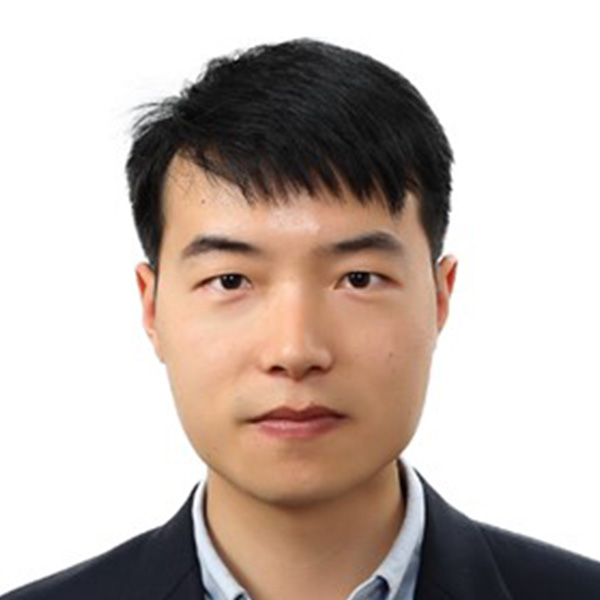
Abstract The growing demand for electric vehicles and stationary energy storage systems calls for developing next generation batteries that combine high energy, high power and low cost. Among many post lithium-ion batteries, calcium rechargeable batteries utilizing divalent Ca2+ ion charge carriers are expected to offer clear benefits in affordability and potentially high energy density, due to the abundance of calcium in the Earth’s crust (46600 ppm versus 20 ppm for lithium) and the low redox potential of Ca/Ca2+ (-2.9 V vs. standard hydrogen electrode). However, the lack of suitable electrodes is the Achille’s heal of the calcium rechargeable battery technology. The relatively large ionic radius and divalent nature of Ca ions make the insertion kinetics generally sluggish in intercalation hosts. Moreover, a large Ca2+ intercalation is supposed to cause extended volume changes, triggering a premature degradation of electrode structures. In this talk, I would like to present our recent work in exploring conventional or established electrode materials in other battery systems, like graphite in Li-ion batteries and polyanionic material in Na-, K-ion batteries, as high-performance calcium battery electrodes through new electrochemical reactions, and discuss on the outlook of non-aqueous calcium rechargeable batteries.
Biography Dr Zhenglong Xu is currently an Assistant Professor in the Department of Industrial and Systems Engineering (ISE) at The Hong Kong Polytechnic University. Dr Xu received his BSc degree in Materials Science and Engineering from Zhejiang University and PhD degree in Mechanical and Aerospace Engineering from Hong Kong University of Science and Technology. Before joining ISE at PolyU, he worked as Postdoc/Research Fellow at HKUST, PolyU and Seoul National University. His research interest mainly lies in the design, fabricate and characterization of advanced energy materials and devices, such as rechargeable batteries. He has also established multimodal in-situ characterizations, including in-situ TEM and operando synchrotron X-ray, to probe into the fundamentals in energy storage/conversion systems.
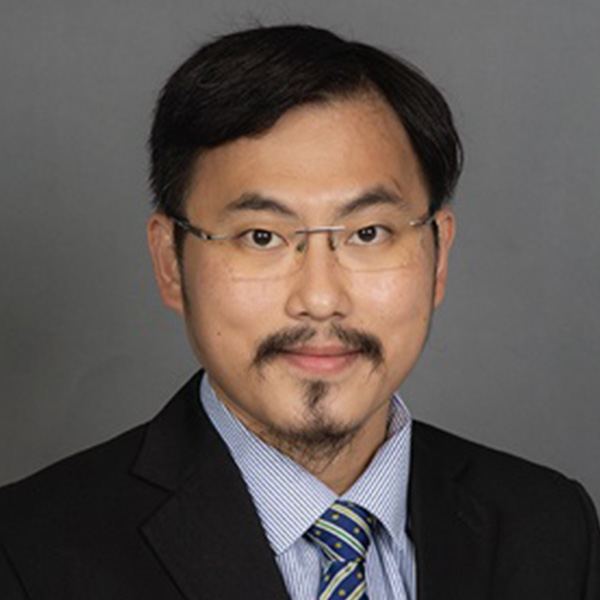
Abstract Atomic catalysts (AC) as the frontier research topics have attracted tremendous attention in recent electrocatalyst research. To supply a direct strategy for discovering more promising electrocatalysts, we have carried out a comprehensive mapping study of anchoring transition metals on the graphdiyne (GDY) [1]. We have proposed the “Redox Barrier Model” to quantify the capability of electron exchange and transfer (ExT), which enables the comparison of different AC systems. For the hydrogen evolution (HER) process, we have further extended the conventional indicator to chemical binding energy, desorption energy, and electronic structures to indicate the electroactivity of GDY-based ACs [2]. In particular, GDY-Eu and GDY-Sm are two promising candidates for the HER through both the electronic structures and the reaction energy trends. These conclusions have also been verified by machine learning based on the decision-tree algorithm. In the meantime, AC has offered a great platform to further explore the potential of dual atomic catalysts (DAC). For GDY-based DAC, we have investigated both the formation stability and the d-band center modifications among all the transition metals and lanthanide metal combinations [3]. Interestingly, it is proven that the combinations between the lanthanide metals and transition metals contribute to the optimized stability and electroactivity due to the electronic self-balance effects induced by the efficient f-d orbital coupling effect. For the abundant and cheap main group elements including the alkaline/alkaline earth metals (AAEM), post-transition metal (Post-TM), and metalloids, their applications in ACs are also revealed [4]. The introduction of main group elements enables subtle modulations on the electronic structures of transition or lanthanide metals without sacrificing electroactivity. Therefore, these works have supplied important insights into the dual atomic catalysts in both electroactivity and stability, which opens a new avenue in designing advanced atomic catalysts with high performances./P>
Biography Dr HUANG has received his PhD in 2012 from the University of Cambridge, and his BSc in condensed matter physics from the Department of Physics, Peking University in 2007. Following a systematic training period of Post-doc in the Chemistry Department at Peking University, and in Hong Kong, he was starting up his independent research at the Hong Kong Polytechnic University in 2015 and now is the Associate Professor of the Department of Applied Biology and Chemical Technology. His main research fields are electronic structures of nanomaterials, energy materials, solid functional materials, and rare earth materials, as well as their applications in multi-scale energy conversion and supply systems. Dr. Huang has published 240 research papers in peer-reviewed international journals with 194 papers as the corresponding author/first author/co-first author including Nature, Science, Chem. Soc. Rev., Energy Environ. Sci., Sci. Adv. J. Am. Chem. Soc., Angew. Chem. Int. Ed., Nat. Commun., Adv. Mater., Adv. Energy Mater., etc. and has received citations over 10000 times with h-index of 51. Meanwhile, Dr. Huang is also Member of the Royal Society of Chemistry (MRSC), the Youth Editorial Board Member of J. Rare Earths, Rare Metals, and the Young Star Editor of Nano Research (Springer Nature).

Abstract One of the main research challenges for electrocatalysis that produces carbon-containing products from CO2 is avoiding the competing hydrogen evolution reaction. Instead of totally eliminating hydrogen, our approach makes use of the readily available protons in aqueous electrolyte to co-produce CO and H2, making synthesis gas (syngas) with a tunable CO:H2 ratio. The resulting syngas can then be used as feedstock for existing thermocatalytic processes, such as Fischer–Tropsch and methanol synthesis reactions [1]. We will present our results in identifying palladium hydride (PdH), formed under electrocatalytic reaction conditions, as an effective electrocatalyst that enables the syngas production [2]. We will also report our efforts in reducing the loading of Pd by alloying Pd with inexpensive secondary metals, supporting Pd on transition metal carbides and nitrides, and utilizing single atom Pd catalysts. For each type of the catalysts, we monitor the phase transition from Pd to PdH under reaction conditions with in-situ synchrotron-based X-ray absorption and X-ray diffraction techniques. We also identify descriptors for syngas production on PdH, bimetallic PdH, and supported PdH catalysts by performing DFT calculations of the effect of PdH formation on the binding strength of reaction intermediates. The research methodology established here should be useful not only for continued optimization of Pd-based syngas-producing electrocatalysts, but also for enhancing activity while reducing the loading of precious metals for other electrocatalytic applications.
Biography Jingguang Chen is the Department Chair and Thayer Lindsley Professor of Chemical Engineering at Columbia University, with a joint appointment at Brookhaven National Laboratory. He is the co-author of 23 United States patents and 460 journal publications, and he is recognized as a Web of Science Highly Cited Researcher. He is currently the President of the North American Catalysis Society and the Director of the Synchrotron Catalysis Consortium. He received many awards, including the 2015 George Olah Award from the American Chemical Society, the 2017 Robert Burwell Lectureship from the North American Catalysis Society, and the 2020 Robert H. Wilhelm Award from the American Institute of Chemical Engineers.

Abstract Electrochemical CO2 reduction, with the energy input from renewable electricity, provides a green and alternative route for the generation of chemicals and fuels. However, its practice is currently challenged at two systematic levels: the lack of selective electrocatalysts to combat the strong competition from water reduction, and the lack of novel reactors for large-scale reaction rates and efficient product separation. In this talk, I will introduce the rational design of both catalytic materials and reactors towards practical CO2 reduction performances. By dispersing transition metals into isolated single atoms with electronic structures significantly different from their bulk counterparts, we can dramatically suppress the competing hydrogen evolution and deliver an ultra-high CO2 reduction selectivity of more than 95% under ambient conditions in water. Scaled-up synthesis and efficient reactors demonstrated the potential for practical applications. Furthermore, by designing a novel solid electrolyte reactor, we successfully demonstrated a continuous generation of pure liquid fuel solutions via CO2 reduction. This technology eliminates the product separation process required in traditional CO2 reduction electrolyzers, opening up its practical applications in the future.
Biography Dr Haotian Wang is currently a William Marsh Rice Trustee Chair Assistant Professor in the Department of Chemical and Biomolecular Engineering at Rice University. He obtained his PhD degree in the Department of Applied Physics at Stanford University in 2016 and his Bachelor of Science in Physics at the University of Science and Technology of China in 2011. In 2016 he received the Rowland Fellowship and began his independent research career at Harvard as a principal investigator. He was awarded the 2021 Sloan Fellow, 2020 Packard Fellow, 2019 CIFAR Azrieli Global Scholar, 2019 Forbes 30 Under 30, highly cited researchers, etc. He serves as the editorial board of Communications Materials. His research group has been focused on developing novel nanomaterials for energy and environmental applications including energy storage, chemical/fuel generation, water treatment, etc.
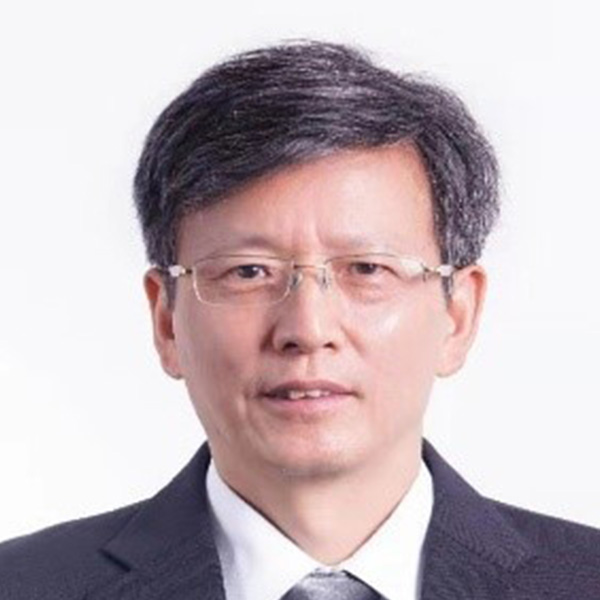
Abstract Carbon dioxide emission reduction plays a key role in carbon peaking and carbon neutrilizartion. To reduce the CO2 emission, both the CO2 transformation and hydrogen energy substitution for fossil fuels are the important and attractive strategies, in which the electrochemical CO2 reduction reaction (CO2RR) and hydrogen evolution reaction (HER) are respectively among the most efficient pathways in CO2 transformation and hydrogen energy generation. Oxygen evolution reaction is the rate-determing reaction in coupling to both CO2RR and HER, which, however, suffers from high theoretical potential (1.23 V) and overpotentials. In addition to reducing the overpotentials, the most efficient way is to substitute for OER by the oxidation of small molecule organics of much lower intrinsic oxidation potentials at anode to promote CO2RR and HER at cathodes. Here reports the most recent progresses achieved in last several years in electrochemical cathodic CO2RR and HER in coupling with the anodic oxidation of small molecule organics (e.g., glycerol, methanol) or metal ions, for substentilly reduced anodic potentials and/or productions of value-added chemicals (formate, glycollic acid, etc.).
Biography Professor Jianlin Shi obtained his Ph.D degree in 1989 in Shanghai Institute of Ceramics, Chinese Academy of Sciences, and selected as academician of CAS. He had been working on the processing science of advanced ceramics and sintering theory of advanced ceramics before 2005. From 1998 till now, his research interest mainly includes: synthesis of mesoporous materials and host-guest mesoporous nanocomposites; hierarchically micro-/mesoporous zeolite for large molecule- involved catalytic applications; mesoporous silica nanoparticles and related nanostructured nanocomposites for biomedical applications. Most recently, he has proposed and been focusing on the nanocatalytic medicine for the treatments of malignant tumors and other serious diseases by using non-toxic/less-toxic nanomaterials. More than 500 papers have been published, and the publications were cited by others for more than 50,000 times with an H-index of 129.
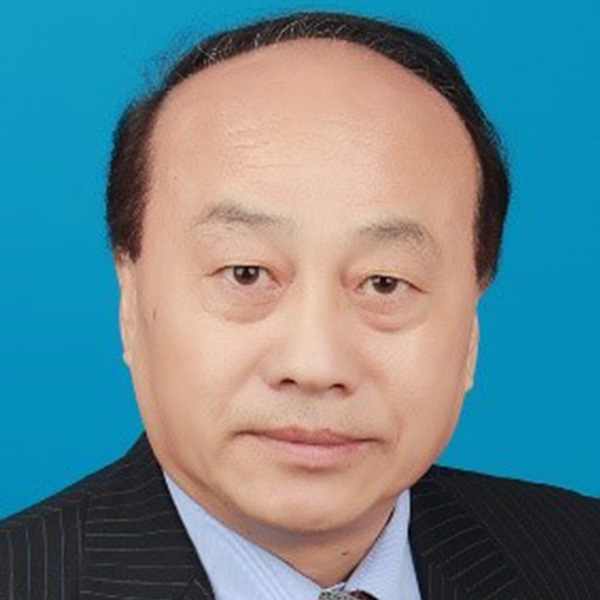
Abstract Converting carbon dioxide (CO2) into useful low-carbon chemicals/fuels is one of the important ways to reduce emissions and achieve carbon neutrality. Among them, electrochemical CO2 catalytic reduction to produce methanol, formic acid, CO, methane, ethanol, etc. has proven to be feasible. However, insufficient activity, durability and selectivity of electrocatalysts are the main challenges in the electroreduction of CO2 at low temperatures. In order to overcome these challenges, various catalysts have been explored in the past few decades, including metals, metal alloys, and metal complexes. This presentation will summarize several main types of electrocatalysts for reducing CO2 from the perspectives of activity, stability and product selectivity, as well as the work of the presentation’s team on the development of new catalysts. The presentation also suggests some research directions in this field to promote the research and development of carbon dioxide electroreduction catalysts to realize the industrialization of technology.
Biography Prof. ZHANG is a Professor and Dean of the Institute for Sustainable Energy and Dean of the College of Science at Shanghai University, and former Principal Research Officer at the National Research Council of Canada (NRC), a Member (Fellow) of The Academy of Science of the Royal Society of Canada (RSC-CA), Member (Fellow) of The Engineering Institute of Canada (EIC), Member (Fellow) of The Canadian Academy of Engineering (CAE), Fellow of the International Society of Electrochemistry (ISE), and a Fellow of the Royal Society of Chemistry (RSC). Prof. Zhang is the chairman/president of the International Academy of Electrochemical Energy Science (IAOEES). The technical expertise areas of Prof. Zhang are Electrochemistry, Photoelectrochemistry, Spectroelectrochemistry, Electrocatalysis, Fuel cells (PEMFC, SOFC, and DMFC), Batteries, and Supercapacitors. Prof. Zhang received his B.S. and M.Sc. in Electrochemistry from Peking University in 1982 and 1985, respectively, and his Ph.D. in Electrochemistry from Wuhan University in 1988. Starting in 1990, he carried out three terms of postdoctoral research at the California Institute of Technology, York University, and the University of British Columbia. Prof. Zhang holds more than 16 adjunct professorships, including one at the University of Waterloo, one at the University of British Columbia and one at Peking University. Up to now, Prof. Zhang has more than 700 publications with approximately 62000 citations (h-index: 101), including 550 refereed journal papers, 26 edited /co-authored books, 43 book chapters, 190 conference plenary/keynotes/invited presentations, as well as over 16 US/EU/WO/JP/CA patents, and produced in excess of 90 industrial technical reports. Prof. Zhang serves as the Editor-in-Chief for Springer Nature Journal of “Electrochemical Energy Reviews”, the Associate Editor for “Green Energy and Environment”, the Editor for CRC book series “Electrochemical Energy Storage and Conversion”, and Editorial Bboard Member for several international journals. Prof. Zhang is Chairman/President of the International Academy of Electrochemical Energy Science (IAOEES). In 2014, 2015, 2016, 2017, 2018, 2019, 2020 and 2021, Prof. Zhang was ranked as the top 1% of Highly Cited Researchers in the world and has also listed as one of the “World's Most Influential Scientific Minds” by Thomson Reuters in 2014, 2015 and 2016. In 2018, Prof. Zhang received a reward of “the Lifetime Achievements” by the 4th International Conference on Electrochemical Energy and Technology (EEST2018).
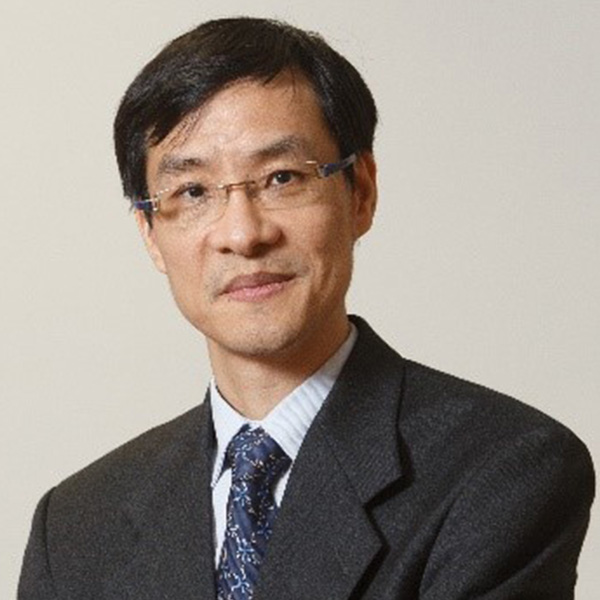
Abstract The electrochemical CO2 reduction (ECO2R) powered by renewable electricity is a promising strategy for producing valuable fuels and feedstocks. However, the highly selective generation of economically desirable products such as ethylene (C2H4) from ECO2R is challenging. C2H4 is an essential building block for producing plastics, solvents, and cosmetics. Furthermore, there is no direct CO2 reduction to C2H4 in the chemical industry. Thus, the direct ECO2R to C2H4 offers an alternative avenue in synthesis. However, the biggest obstacle to ECO2R is carbonate formation, which causes low carbon conversion, severe energy penalty, and inferior system stability in alkaline and neutral reactors. A pure-H2O-fed membrane-electrode-assembly (MEA) electrolysis system for ECO2R-to-C2H4 using a high-performance step-facet-rich Cu catalyst will be reported. The system eliminates carbonate formation and crossover. ECO2R was scaled up in a 6-MEA-cell stack with a total current of 10 A under the pure H2O. As a result, the Faradaic efficiency of ~50% toward C2H4 was achieved with CO2-to-C2H4 conversion as high as 39%. Moreover, the system’s lifetime can be prolonged to an unprecedented over 1000 h.
Biography Prof. LAU is a Chair Professor and the head of the Department of Applied Physics. He is also the Director of the University Research Facility in Materials Characterization and Device Fabrication. Prof. Lau is a Fellow of the American Physical Society. He has published over 400 journal papers with over 22500 citations and has an H-index of 76. Prof. Lau’s current research focuses on nanomaterials and energy materials, particularly the synthesis of 2D materials for optoelectronic, electrocatalysis, and energy storage applications. He is currently working on several projects concerning green energy, including developing novel electrocatalysts for hydrogen evolution reaction in neutral media, a scalable electrochemical cell for the conversion of CO2 to C2H4, and machine learning to accelerate the development of electrocatalysts for fuel cells.
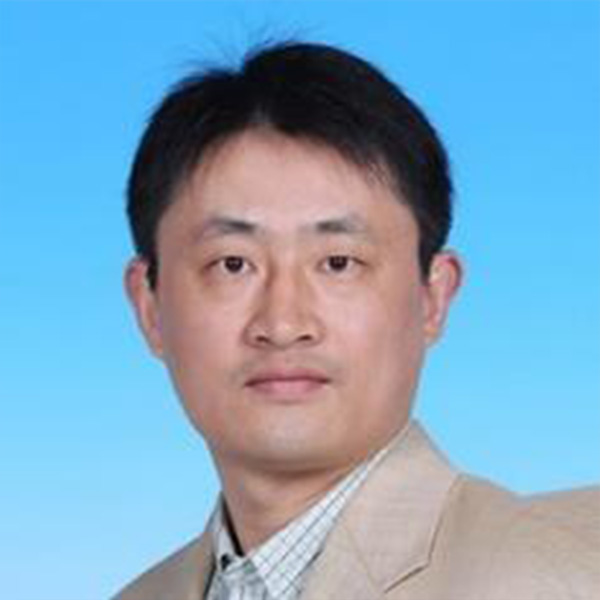
Abstract Low temperature fuel cells are electrochemical devices that convert chemical energy directly to electricity. They have great potential for both stationary and transportation applications and are expected to help address the energy and environmental problems that have become prevalent in our society. Despite their great promise, commercialization has been hindered by lower than predicted efficiencies and high loading of Pt-based electrocatalysts in the electrodes. For more than five decades, extensive work has being focused on the development of novel electrocatalysts for fuel cell reactions. In this talk, I will present recent progress in developing advanced electrocatalysts and their fuel cell performance in my group, with an emphasis on core-shell and non-previous metal materials.
Biography Prof. SHAO is a full Professor in the Department of Chemical and Biological Engineering at the Hong Kong University of Science and Technology (HKUST). He is also the Director of the HKUST Energy Institute. He earned BS and MS degrees in Chemistry from Xiamen University, and a PhD degree in Materials Science and Engineering from the State University of New York at Stony Brook. Prof. Shao joined UTC Power in 2007 leading the development of advanced electrocatalyts for fuel cells, and was promoted to UTC Technical Fellow in 2012. In 2013, he joined Ford Motor Company to conduct research on lithium-ion batteries. He then joined HKUST in 2014. He is an Associate Editor of Journal of the Electrochemical Society. He has published over 200 peer-reviewed articles, 1 edited book and filed over 30 patent applications (19 issued). He has also received a number of awards, including the Supramaniam Srinivasan Young Investigator Award from the ECS Energy Technology Division (2014). He is one of the founding members of Young Academy of Science of Hong Kong.
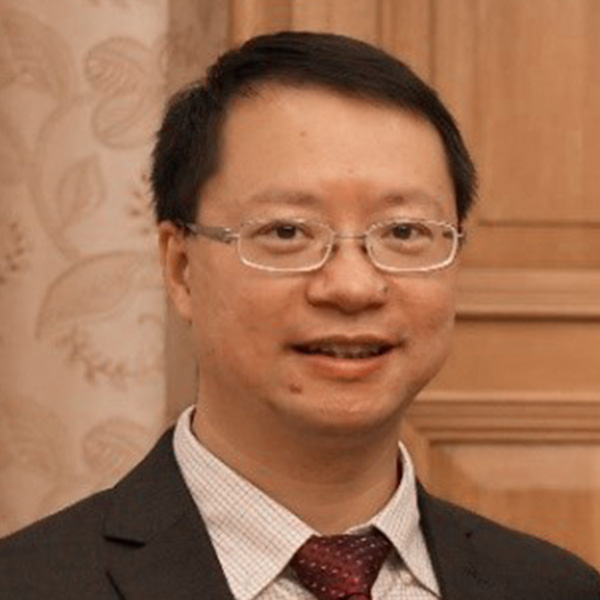
Abstract Solid oxide fuel cells (SOFCs) are promising electrochemical devices for clean power generation, especially for combined heat and power cogeneration. As the cathode usually causes the highest overpotential loss in SOFC, efforts have been made in developing nanostructured SOFC cathodes by infiltration or developing new cathode materials. In this talk, research activities conducted at HK PolyU will be presented, including modeling and testing of nanostructured SOFC cathode, development of a series of perovskite oxides, the thermal expansion offset approach for composite cathode, and testing of SOFC using hydrogen, biogas, plastic waste, and solid carbon. The future development of SOFC will also be discussed. Keywords: Solid oxide fuel cells; Combined heat and power cogeneration; Oxygen reduction reaction; Cathode; Perovskite; Nanostructure.
Biography Prof. NI received his Ph.D. in Mechanical Engineering from University of Hong Kong (HKU) in 2007. Then Prof. NI stayed in HKU as a Post-doctoral researcher for 2 years, before joining the Hong Kong Polytechnic University as an Assistant Professor in July 2009. Prof. NI was promoted to Associate Professor and then Full Professor. After serving as an Associate Head for BRE for 5 years, he started to serve as an Associate Dean of FCE in July 2021. Prof. NI worked as a Humboldt Fellow at the Forschungszentrum Jülich, Germany in 2017. Prof. NI’s research interests include fuel cells and rechargeable metal-air batteries. In particular, Prof. NI has developed a series of multi-physics models for fuel cells to optimize the fuel cell electrode microstructure and fuel cell stack configuration. He also developed perovskite oxides for use as fuel cell cathodes. He served as an Associate Editor for Science Bulletin in 2015-2017. Currently, he is a Senior Editor for Sustainable Energy Technologies and Assessments (Elsevier) and an Associate Editor for International Journal of Green Energy (Taylor & Francis) and International Journal of Energy Research (Wiley).
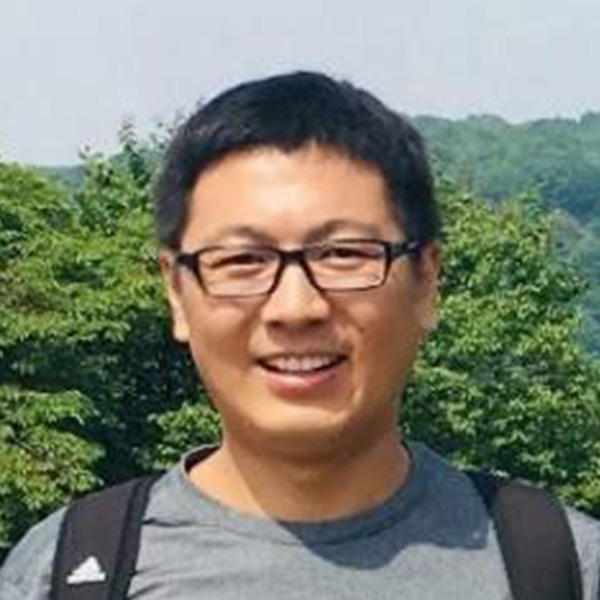
Abstract Liquid fuel cells, which promise to be a clean and efficient energy production technology, have recently attracted worldwide attention, primarily because liquid fuels offer many unique physicochemical properties including high energy density and ease of transportation, storage as well as handling. However, conventional liquid fuel cells, which use acid proton exchange membranes and precious metal catalysts, result in rather low performance. In our research, we use alkaline anion exchange membranes as the solid electrolyte. It is demonstrated that the change from the acid membrane to an alkaline one leads to a significant performance boost. In addition, we also develop a novel hybrid fuel cell, which consists of an alkaline anode and an acid cathode. To further optimize and improve the performance, we develop an integrated model for the liquid fuel cell system. This high performance is attributed not only to the unique design, but also to the use of the integrated model.
Biography Dr AN is currently an Associate Professor of Mechanical Engineering at The Hong Kong Polytechnic University. He received his Bachelor degree in Thermal and Power Engineering from Harbin Institute of Technology and PhD degree in Mechanical Engineering from The Hong Kong University of Science and Technology. His research interests include advanced energy conversion and storage technologies, such as fuel cells and flow batteries.
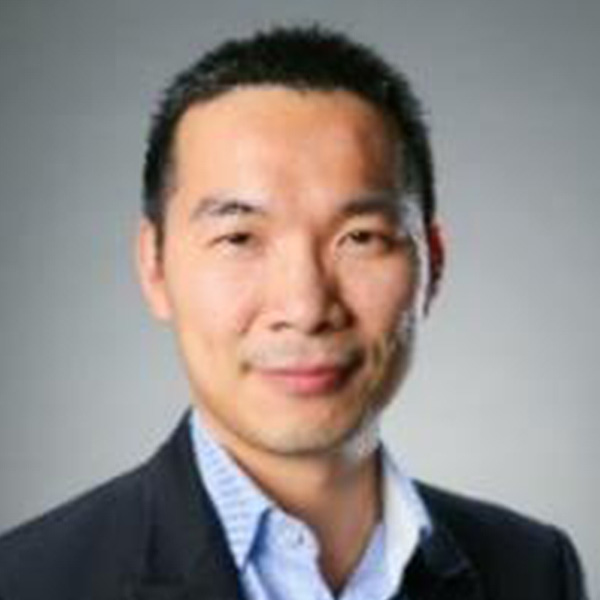
Abstract The development of efficient and Earth-abundant oxygen evolution reaction (OER) catalysts is essential for the generation of renewable hydrogen. Transition metal oxides and oxyhydroxides are shown as promising OER catalysts in alkaline solutions. However, significant improvement in activity is still required with these catalysts. Moreover, the fundamental understanding of these oxide catalysts is still lacking. In this talk, I will present our work in understanding, improving, and applying metal oxide catalysts, in particular nickel and iron-containing oxides.
Biography Prof. HU was born in 1978 in Putian, Fijian Province, China. He received a B.S. degree from Peking University (2000; advisor: Prof. Jianhua Lin) and a Ph.D. degree from the University of California, San Diego (2004; advisor: Prof. Karsten Meyer). He carried out a postdoctoral study at the California Institute of Technology (advisor: Prof. Jonas Peters) before joining the faculty of the École Polytechnique Fédérale de Lausanne (EPFL) as a tenure-track assistant professor in 2007. He was promoted to associate professor in January 2013 and full professor in June 2016. He directs an interdisciplinary research program to develop catalysis for sustainable synthesis of added-value chemicals and for cost-effective production of solar and electric fuels. His group is unifying concepts and methods in homogeneous, heterogeneous, and enzyme catalysis to obtain fundamental understanding of catalysis and novel catalysts.

Abstract Drven by the growing need for clean and sustainable energy sources, a number of carbon-neutral energy conversion technologies have been extensively explored over recent years, including water splitting, fuel cell, and metal ion batteries. In particular, water electrolysis, consisting of hydrogen evolution reaction (HER) and oxygen evolution reaction (OER), is considered a promising and efficient way to produce a clean energy carrier, hydrogen, to meet such energy demands. Green hydrogen produced by renewable-energy-powered water electrolysis could help resolve the energy crisis and cut our carbon footprint at the same time. So far, the most efficient catalysts developed for both HER and OER make use of noble metals, which largely hinders their wide application due to their high cost and limited availability. Transition metal compounds based on earth-abundant elements offer an economically-viable platform for electrocatalytic chemical and energy conversions. In terms of catalytic efficiency and stability, these catalysts still need proper tuning of surface property, electronic configuration, and morphology to win over the noble-metal-based ones. In this talk, the strategies we develop to prepare effective water-splitting catalysts will be presented with a special focus made to the cases of emerging material systems and their characterization.
Biography Dr LEE received his Ph.D. degree in Physical Chemistry from McGill University, Canada in 2006. He is an associate professor at the Department of Applied Biology and Chemical Technology, Hong Kong Polytechnic University. His research interests include the development of novel semiconductor nanomaterials and their composites for photocatalytic and electrocatalytic water splitting and CO2 reduction. His research focuses on understanding the activation and deactivation mechanisms of electrocatalysts at operating conditions from an atomic scale, which would guide the design of catalysts and electrode materials for the next-generation energy conversion and storage devices and electrochemical sensors.
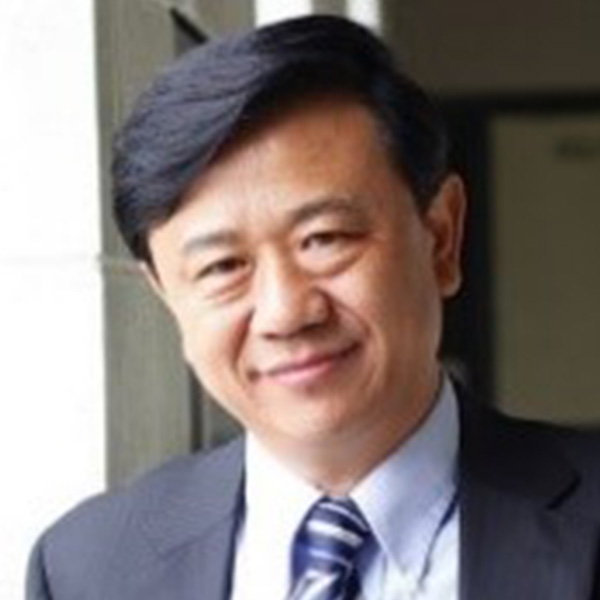
Abstract All-state-state lithium batteries (ASSLBs) have gained worldwide attention because of the high ionic conductivity of SEs, intrinsic safety and increased energy density. In ASSLBs, solid-state electrolyte is a key component and interface is a big challenge. In this talk, I will talk about two types of solid-state electrolytes including sulfide-based electrolyte (focusing on interface) and halide-based electrolytes (focusing on synthesis and increase of ionic conductivity). In the first part of this talk, I will demonstrate to apply atomic layer deposition/molecular layer deposition (ALD/MLD) for interface design between sulfide-based electrolyte and cathode material. Compared with polymer-based and oxide-based electrolytes, sulfide-based electrolyte generally exhibits the highest ionic conductivity (10-3 ~ 10-2 S/cm) and favorable mechanical property. However, the serious interfacial challenge, bad air stability, narrow electrochemical windows of sulfide-based electrolyte significantly impede development of sulfide-based ASSLBs [1]. Generally, an artificial, uniform and ultrathin interfacial layer is critical to address these challenges. ALD) and MLD are unique coating techniques that can realize excellent coverage and conformal deposition with precisely controllable at the nanoscale level due to its self-limiting nature, which are ideal for addressing the challenges of interface in SSLBs [2-4]. In the second part of this talk, I will talk about halide-based electrolyte for ASSLBs. Compared with sulfide-based electrolyte, both experimental and theoretical results recently demonstrate that halide-based electrolytes have more advantages including high RT ionic conductivity (>10-3 S cm-1, theoretically possible 10-2 S cm-1), wide electrochemically stable window (possible up to 6 V), high air-stability, good stability toward oxide cathode materials, and even salable water synthesis strategy [5-10]. References
Biography Prof. SUN is a Full Professor and senior Canada Research Chair (Tier I) for the development of nanomaterials for clean energy, at the University of Western Ontario, Canada. Prof. Sun is a Fellow of Royal Society of Canada and Fellow of the Canadian Academy of Engineering. Prof. Sun was elected to be a foreign member of the Chinese Academy of Engineering in 2021. Prof. Sun received his Ph.D degree in Materials Chemistry at the University of Manchester, UK, in 1999. Prof. Sun’s research is focused on advanced materials for energy conversion and storage including Li batteries and fuel cells. Prof. Sun is an author and co-author of over 580 refereed-journals (e.g. Nature Energy, Nature Communications, Advanced Materials, J. Am. Chem. Soc., Angew. Chem., Nano Letter, Energy & Environmental Science) with citations of over 47,000 times and H-index of 115. Prof. Sun was named as one of "Highly Cited Researchers". He edited 4 books and published 20 book chapters as well as filed 24 patents. He has given more than 160 plenary/keynote/invited talks in international conferences, symposia and workshops. Prof. Sun received various awards such as Professional Achievement Awards from Cross-cultural Professionals Association of Canada (CPAC, 2016), Award for Research Excellence in Materials Chemistry Winner from Canada Chemistry Society (2018), Award of Merit of the Federation of Chinese Canadian Professionals (2018), Western Hellmuth Prizes (The highest Research Achievement Award in the University, 2019) and IBA Battery Technology Award (2021). Prof. Sun is a Vice Chairman of the International Academy of Electrochemical Energy Science (IAOEES). He also serves as an Editor-in-Chief of “Electrochemical Energy Review” (IF=28.9) under Spring-Nature.
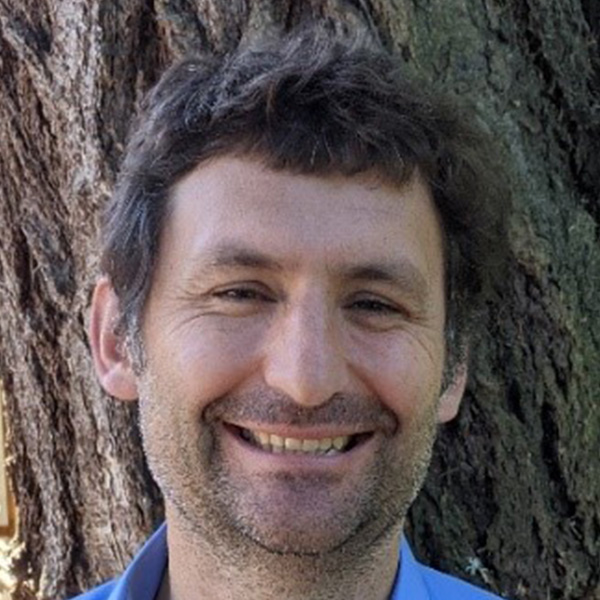
Abstract Commercialized membrane electrolyzers use acidic proton exchange membranes (PEMs). These systems offer high performance but require the use of expensive precious-metal catalysts such as IrO2 and Pt that are nominally stable under the locally acidic conditions of the ionomer. Alkaline-exchange-membrane (AEM) electrolyzers in principle offer the performance of commercialized PEM electrolyzers with the ability to use earth-abundant catalysts and inexpensive bipolar plate materials. I will present our fundamental work in understanding the chemical and electrochemical processes in earth-abundant water-oxidation catalysts, including the use of integrated reference-electrode device architectures and cross-sectional materials analysis, as well as progress in building high-performance AEM electrolyzers. Baseline systems operate at 1 A·cm-2 in pure water feed at < 1.9 V at a moderate temperature of ~70 °C using either IrO2 or Co3O4 anode catalyst layers, PiperION alkaline ionomers, and stainless-steel porous transport layers. These devices, however, degrade rapidly compared to PEM electrolyzers. The voltage profile corresponding to degradation has initial fast (~10 mV/h) and steady-state slow components (~1 mV/h), which we link to chemical and structural changes in the ionomer catalyst reactive zone. We further discover that dynamic Fe-based OER catalysts – that have world record performance in traditional liquid alkaline electrolyzer systems – perform poorly with enhanced degradation rates in alkaline membrane electrolysis, illustrating fundamentally different chemical design principles for OER catalysts. I will discuss these processes in electrolyzer devices and in model systems, as well as present promising new chemical strategies we have developed to mitigate degradation and enhance performance using novel ionomers and electrode catalyst compositions and architectures. Finally, I will introduce the new concept of bipolar-membrane electrode assemblies and electrolyzers.
Biography Prof. BOETTCHER is a Professor in the Department of Chemistry and Biochemistry at the University of Oregon. His research is at the intersection of materials science and electrochemistry, with a focus on fundamental aspects of energy conversion and storage. He has been named a DuPont Young Professor, a Cottrell Scholar, a Sloan Fellow, and a Camille-Dryfus Teacher-Scholar. He is a 2019-2021 ISI highly cited researcher (top 0.1% over past decade). In 2019 he founded the Oregon Center for Electrochemistry and the nation’s first graduate program in Electrochemical Technology. In 2021, he was named one of ten finalists for the Blavatnik National Award in Chemistry.
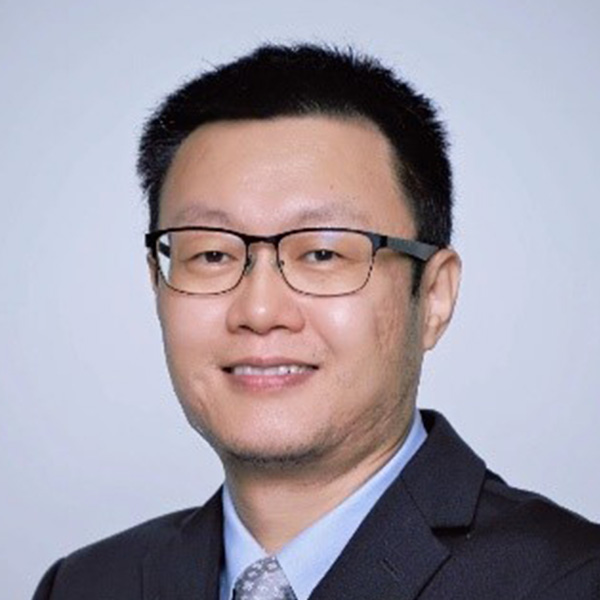
AbstractApplying an external magnetic field to electrochemical reactions is recently an interesting topic among the electrocatalysis community. Earlier studies have shown that the water oxidation reaction (also called oxygen evolution reaction, OER) can be promoted by an external magnetic field through the promoted bubble removal on the electrode surface. However, that is for the case under the high overpotential and high current applied. In 2019, it has been reported that the promotion of OER in alkaline by applying the field is related to the magnetism of the electrode materials. On the other hand, theoretically, the OER needs to consider the triplet O2 formation, which involves the spin-polarized electron transfer. The spin-polarized electron transfer can be achieved by ferro(i) magnetic catalysts, however, which may not be easily proved experimentally. That is because in principle, an external magnetic field is not necessary for spin-polarized electron transfer on ferro(i) magnetic materials. It is also unclear about the reaction pathways with a consideration of spin-polarized electron transfer. The pH dependent enhancement has further generated confusion about the relation between magnetic field enhanced OER and the theoretical expectation. In addition, some magnetic catalysts do not exhibit any improvement under the magnetic field. All these phenomena have created a scientific puzzle, appealing to the community. In this talk, I will briefly discuss the progress of this field and several important experimental findings for solving the puzzle. The critical roles of magnetization, pinning effect, and pH dependent increment will be discussed in detail.
Biography Prof. XU is a professor in the School of Materials Science and Engineering, Nanyang Technological University. He received his PhD degree in Electroanalytical Chemistry in 2008 and B.S. degree in Chemistry at 2002 from Lanzhou University, China. His PhD training was received in Lanzhou University (2002-2004), Institute of Physics, CAS (2004-2005), and Brown University (2005-2007). Since 2007, he worked in State University of New York at Binghamton as a Research Associate and from 2009 he worked in Massachusetts Institute of Technology as a Postdoctoral Researcher. Prof. Xu has received several awards such as Chun-Tsung Endowment Outstanding Contribution Award - Excellent Scholar at 2018 and the Zhaowu Tian Prize for Energy Electrochemistry by International Society of Electrochemistry (ISE) in 2019. Prof. Xu is a member of the International Society of Electrochemistry (ISE), The Electrochemistry Society (ECS), and the American Association for the Advancement of Science (AAAS). He was awarded Fellow of Royal Society of Chemistry (FRSC) on Nov. 2017. He served as the president of ECS Singapore Section. Prof. Xu is a Highly Cited Researcher by Clarivate Analytics, Web of Science since 2018.
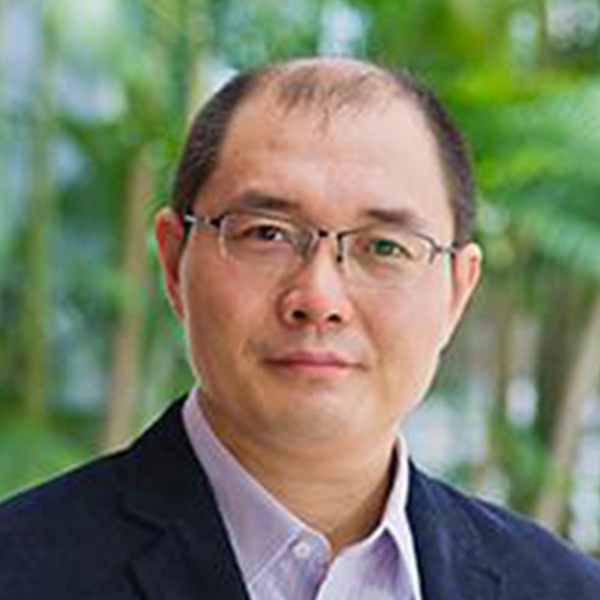
Abstract Development of energy storage system in the past year focus on improvement of energy density. While the progress is remarkable, safety problems of lithium-ion batteries (LIB) have been intensively exposed. On one hand, LIB is not intrinsically safe with very active anode, flammable electrolyte and oxygen-releasing cathode; on the other hand, many application scenarios actually don’t require very high energy density. We work on aqueous electrolyte batteries to achieve both high energy density and superior safety performance. We developed a few approaches to improve stability of Zn anode and figured out potential problems of the current Zn anode studies. We tackled the challenge of stability of Zn anode at high areal capacity and high current density by developing artificial SEI film, electrolyte regulation and organic anode development. In addition, we develop Zn powder based anode and improve their stability for more practical applications. In terms of cathode of cathode materials, we develop various Mn, PBA, organic materials and MXenes based materials, targeting on a stable and high-capacity ones. We also develop a few cathode materials based on conversion mechanism, providing extraordinary capacity and decent voltage output. We also developed a few approaches to regulate conventional cathode materials for better stability. Our research purpose is to develop aqueous Zn batteries for large scale energy storage with ultimate safety performance and integrate them with renewable energy systems. We hope our research can contribute to sustainable society development.
Biography Prof. ZHI obtained B.S. degree in Physics from Shandong University and Ph.D. degree in condensed matter physics from Institute of Physics, Chinese Academy of Sciences. After two years’ postdoc at National Institute for Materials Science (NIMS) in Japan, he was promoted to be ICYS researcher, researcher and senior researcher (permanent position) in NIMS. Prof. ZHI is now a professor in MSE, CityU. Prof. ZHI has extensive experiences in flexible energy storage, aqueous electrolyte batteries, and zinc ion batteries. He has published more than 400 papers with an H-index of 108 and citations of 40000. He has been granted more than 80 patents. Prof. ZHI is a recipient of the outstand research award and President Award of CityU, NML Researcher award, and Beijing Science and Technology Award (first class). He is Clarivate Analytics Global highly cited researcher (2019-2021, Materials Science), RSC fellow and member of The Hong Kong Young Academy of Sciences.
Abstract The capacity degradation in layered Ni-rich LiNixCoyMnzO2 (x ≥ 0.8) cathode largely originated from drastic surface reactions and intergranular cracks in polycrystalline particles. Herein, we report a highly stable single-crystal LiNi0.83Co0.12Mn0.05O2 cathode material, which can deliver a high specific capacity (∼209 mAh g–1 at 0.1 C, 2.8–4.3 V) and meanwhile display excellent cycling stability (>96% retention for 100 cycles and >93% for 200 cycles). By a combination of in situ X-ray diffraction and in situ pair distribution function analysis, an intermediate monoclinic distortion and irregular H3 stack are revealed in the single crystals upon charging–discharging processes. These structural changes might be driven by unique Li-intercalation kinetics in single crystals, which enables an additional strain buffer to reduce the cracks and thereby ensure the high cycling stability.
Biography Dr LIU is currently an assistant professor in the Department of Physics, City University of Hong Kong. He obtained his Ph.D. from Purdue University in 2014. Before joining CityU, he worked as a postdoctoral fellow at Argonne National Laboratory. His current research interests focus on the structure-property studies of functional materials via multiple neutron- and synchrotron-based techniques. His broader research activities include the design and synthesis of novel energy storage materials, phase transition mechanisms and neutron-/synchrotron physics.
Abstract Modern transmission electron microscopy (TEM) has been playing an indispensable role in today’s materials science research. In this talk, I will use recent research progress in my group to demonstrate how the cutting-edge TEM technologies can promote energy material research: With the unmatched sub-angstrom resolution in aberration-corrected TEM, we can now image individual atoms with unprecedented clarity and determining the atom positions with picometer precision. It presents an irreplaceable tool to image the surface atomic structure on catalysts and single-atom catalysts. The capability of performing spatially-resolved electron diffraction and spectroscopy in TEM has also greatly expanded the amount of structural and chemical information achievable from energy materials. Combining with the identical location ex situ TEM strategy, we can track the evolution of local structure and bonding in a particular catalyst at different stages of reaction, which allows us to pinpoint various charging/discharging mechanism in battery electrodes and catalytic mechanism in the oxygen evolution reaction (OER). Furthermore, the recent advance of in situ TEM has enabled the direct observation of various physical and chemical processes in real time at the atomic scale, presenting a powerful tool for comprehending reaction mechanisms such as OER catalysis on nanocatalysts surfaces.
Biography Dr ZHU is currently an associate professor in the Department of Applied Physics, The Hong Kong Polytechnic University. He received his undergraduate degree from Tsinghua University in China, and his Ph.D. from the University of Wisconsin-Madison in 2008. After graduation, he did postdoc in US and Australia, until joining The Hong Kong Polytechnic University in 2016. Dr Zhu has dedicated to developing innovative microscopy and spectroscopy techniques, including atomic-level spectroscopy and in situ electron microscopy, and their applications on emerging materials. He has won “Young Scientist award” from the International Federation of Societies for Microscopy (IFSM, 2014) and “Early Career Award” from the Hong Kong RGC in 2017.
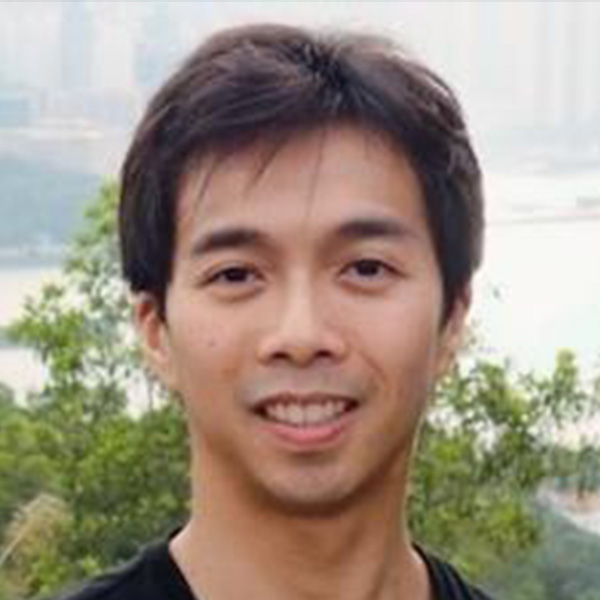
Abstract Operando characterisation has begun to stretch its strategic presence into the mechanistic and kinetic information of various functional and catalytic materials. The Lo group has developed combined diffraction and spectroscopic based techniques which allows not only the elucidation of the fundamental science behind, but also aids the design of next-generation catalysts for sustainable energy transformation. In general, the use of conventional ex situ technology can only reveal limited information of the catalytic systems of interest. It is well known that the active sites of many catalysts will change, such as various oxide-based catalysts, during the catalytic process, and the reaction intermediates are important in analysing the mechanism. The study of these intermediate species can be highly challenging because they are often meta-stable. In many time-resolved ‘quench’ experiments, capturing these meta-stable intermediate species can be extremely unreliable. Without a carefully designed and optimized operando system, crucial information during reactions, such as the capturing of meta-stable species, and the disclosure of surface reconstruction processes, cannot be captured. Using a few well-known model catalysts, such as Cu2O, we demonstrate that bi-phasic Cu/Cu2O can be effectively stabilized – by utilizing the intrinsic surface energy of different exposed facets – to yield high and sustainable FE of C2H4. Because Cu2O is readily reduced under applied voltage but quickly re-oxidized when it is exposed to air, characterization using conventional ex-situ techniques cannot truly elucidate much real-time information. Through a systematic study of various common Cu2O morphologies, we discovered that the formation of bi-phasic Cu/Cu2O is particularly favoured by in situ reduction of octahedral Cu2O with an exposed (111) facet under eCO2RR conditions. In contrast, cubic and nanowire Cu2O, with exposed (100) and (110) facets respectively, feature drastically faster depletion to form Cu0 metal under eCO2RR conditions, which in turn lower product selectivity.
Biography Dr LO is jointly appointed by the Department of Applied Biology and Chemical Technology - Department of Applied Physics at the Hong Kong Polytechnic University. As a convergence scientist, his main research foci are the investigation of the structure-reactivity correlations and the subsequent design of new-generation microporous and nano-catalysts. He has developed a new bulk-approach by combining state-of-the-art synchrotron X-ray facilities with other characterization techniques, that can directly visualize the interactions between substrate molecules and the catalyst surfaces, and thus provide critical mechanistic information to aid the subsequent design and optimization of the systems. Notably, the functional materials identified for the research have extensive applications in sustainable energy transformation science, and are well-recognized by the scientific community.
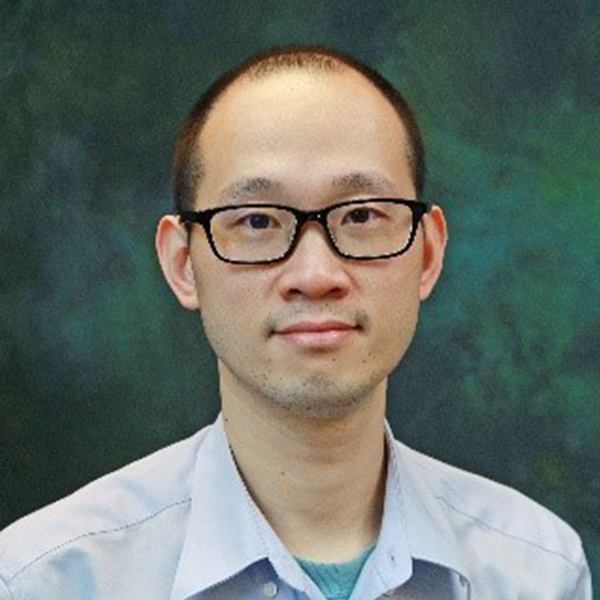
Abstract The immense demand for a sustainable solution to the global energy and water crises can be addressed by deploying an efficient interfacial solar steam generation (ISSG) system. Unlike traditional techniques, the ISSG system employs photothermal materials and a heat localization mechanism to heat only the portion of water associated with the air-water interface rather than the bulk water, significantly enhancing the rate of water evaporation. We employed 1D-2D metallic MWCNTs and a HfTe2 van der Waals heterostructure to achieve broadband solar absorption with an evaporation efficiency of 87.43% under one sun irradiation, resulting in a rise in steam temperature to 132 °C in 20 minutes. This high-temperature steam can be used to sanitize surgical instruments. A proof-of-concept sterilizing demonstration resulted in a 99.04% in E. coli bacteria, surpassing World Health Organization requirements. Such a sterilization system would reduce 2.45 tons of CO2 emissions annually by substituting a 10 L capacity conventional autoclave. Furthermore, we exhibited a 3D solar evaporator composed of recycled paper from municipal solid waste (MSW) in the shape of egg trays and waste dry toner (e-waste) to desalinate seawater with an efficiency of an 81.61%. The competitive advantage of 3D structure in collecting solar irradiance at different light incidence angles over 2D structure, superior cycle stability, low processing temperature, and usage of low-cost waste materials allow its implementation in large-scale water purification systems.
Biography Dr TSANG received his B.Sc. and Ph.D. degrees in Physics from the University of Manchester, UK, in 2000 and 2004, respectively. He is currently working as an Associate Professor in the Department of Applied Physics at The Hong Kong Polytechnic University, where the main focus is bestowed on applied research and consultancy in applied physics, including laser, optoelectronics, mode locking laser development, laser applications, solar energy conversion and advanced materials laser photonic device development. Dr TSANG’s academic research interests cover topics including novel 2D materials and nanostructure used for optics and photonic devices, laser materials, high power lasers, and novel materials for energy applications. He has published over 172 SCI journal articles with an h-index of 44 and total citations around 6500 in Scopus. Dr TSANG was ranked in the top 2% of the world's most-cited scientists in the field of optoelectronics and photonics by Stanford University. Previously, he has completed several industrial projects successfully, funded by companies including Thales Optronics plc., Huawei, Fianium Asian Ltd., Hylas Technology Ltd. Colgate Palmolive (UK) Ltd. and Tissue Science Laboratory plc.
Abstract Electrocatalytic water splitting involves the breaking/formation of chemical bonds and the concomitant dynamic reconstruction of catalyst structure, both of which, in a conventional view, are directly driven by the applied bias. Recent findings have broadened the whole picture where the electrocatalyst may experience significant changes even before and/or after the application of a bias. We summarize recent literature reports using a unified three-scenario picture, where the transfer of charged species is governed by a chemical driving force, i.e., the spatial gradient of potential energies (including chemical potential energy and/or electrostatic potential energy). This picture provides a transformative view to the design of advanced catalysts, which aids to the understanding of the underlying correlation between chemical driving force and corresponding water splitting performance. Here, we use cobalt-based oxides with abundant and tunable electronic structures as a model system to correlate electronic structure, charge accumulation, and OER activity. Our results elucidate how the electrochemical and chemical potentials can synergistically promote OER. It is demonstrated that developing catalysts with abundant oxygen ligand holes at the initial state and/or during the OER process is the key to achieving high intrinsic activity.
Biography Prof. HUANG is currently the Professor in the Department of Applied Physics, The Hong Kong Polytechnic University. His current research interests include materials for energy storage and conversion (such as supercapacitors, rechargeable batteries, electrocatalysts, and ferroelectric materials for energy applications). He has published over 300 refereed papers in top journals, including Nature, Nature Photonics, Joule, Chem, and Nature Communications, etc. He is among the world’s top 2% scientists (career impact and impact of the year 2019 and 2020) according to Stanford Citation Ranking. He obtained the Science and Technology Award (2nd class) from the Ministry of Land and Resources of China in 2017, and the Natural Science Award (2nd Class) from the Ministry of Education of China in 2019. He has been a Guest Editor for Composites Part A, Journal of Applied Electrochemistry, and Key Engineering Materials, and an advisory board member of Journal of Materials Chemistry C. He is currently the editorial board member of Scientific Reports, Composites Communications, Advanced Powder Materials, and Materials Reports: Energy. He is also the board committee member of the International Academy of Electrochemical Energy Science (IAOEES), the expert group member of China Energy Society, and Fellow of the Royal Society of Chemistry.

Abstract The presentation will overview ferroelectric materials for electrochemical and storage applications. Examples will include the harvesting and storage of mechanical energy, thermal energy, and chemical energy using ferroelectric materials. It will overview of piezoelectric harvesting system along with the closely related sub- classes of pyroelectrics and ferroelectrics. These properties are, in many cases, present in the same material, providing the intriguing prospect of a material that can harvest energy from multiple sources including vibration and thermal fluctuations. Water-splitting and water treatment using piezoelectric and pyroelectric materials are examined analytically and experimentally.
Biography Prof. BOWEN has a BSc degree in Materials Science from the University of Bath (1986-1990) and a DPhil in Ceramics from the University of Oxford (1990-1993). Post-doctoral work has been undertaken at Tecnische Universität Harburg-Hamburg and University of Leeds (1994-1996). He was Senior Scientist at the Defence Evaluation and Research Agency from 1996-1998. He joined the University of Bath as a Lecturer in 1998 and is now Professor of Materials and former ERC Advanced Investigator, ERC Grant Agreement no. 320963 on Novel Energy Materials, Engineering Science and Integrated Systems (NEMESIS). Research areas include energy harvesting, piezoelectric materials, dielectrics and functional ceramics.
You are welcome to join the PolyU 85th Anniversary PolyU Science Workshop Series Electrochemical Energy Storage and Conversion Towards Carbon Neutrality Hosted by the Faculty of Science, The Hong Kong Polytechnic University